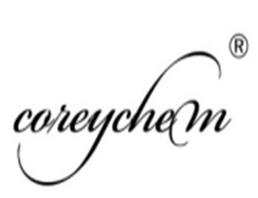
Proflavine hydrochloride
| Price | $1 |
| Package | 1kg |
| Min. Order: | 1kg |
| Supply Ability: | 1000kg |
| Update Time: | 2019-07-06 |
Product Details
| Product Name: Proflavine hydrochloride | CAS No.: 952-23-8 |
| Min. Order: 1kg | Purity: 95%-99% |
| Supply Ability: 1000kg | Release date: 2019/07/06 |
| Contact person: crystal@coreychem.com |
Names
| [ Name ]: | 3,6-diaminoacridine monohydrochloride |
|---|---|
| [ Synonym ]: | More Synonyms |
Chemical & Physical Properties
| [ Density ]: | 1.346g/cm3 |
|---|---|
| [ Boiling Point ]: | 506.9ºC at 760mmHg |
| [ Molecular Formula ]: | C13H12ClN3 |
| [ Molecular Weight ]: | 245.708 |
| [ Flash Point ]: | 292.9ºC |
| [ Exact Mass ]: | 245.071976 |
| [ PSA ]: | 64.93000 |
| [ LogP ]: | 4.51680 |
MSDS
|
Section 1. Chemical Product and Company Identification Proflavine HClCatalog Common Name/ Number(s). Trade Name CAS#952-23-8 Manufacturer
RTECSAR8700000 SPECTRUM CHEMICAL MFG. CORP. TSCATSCA 8(b) inventory: No products were found. Commercial Name(s)Not available. CI# Not available. Synonym3,6-Acridinediamine hydrochloride IN CASE OF EMERGENCY Not available. Chemical Name Chemical FamilyNot available.CALL (310) 516-8000 C13H11N3.HCl Chemical Formula SPECTRUM CHEMICAL MFG. CORP. Section 2.Composition and Information on Ingredients Exposure Limits TWA (mg/m3)STEL (mg/m3) CEIL (mg/m3) NameCAS #% by Weight 1) Proflavine HCl952-23-8100 Toxicological DataNot applicable. on Ingredients Section 3. Hazards Identification Potential Acute Health Effects Hazardous in case of ingestion. Slightly hazardous in case of skin contact (irritant), of eye contact (irritant), of inhalation. Potential Chronic HealthHazardous in case of ingestion. Slightly hazardous in case of skin contact (irritant), of eye contact (irritant), of inhalation. Effects CARCINOGENIC EFFECTS: Not available. MUTAGENIC EFFECTS: Not available. TERATOGENIC EFFECTS: Not available. DEVELOPMENTAL TOXICITY: Not available. Proflavine HCl Section 4. First Aid Measures Eye ContactNo known effect on eye contact, rinse with water for a few minutes. Skin ContactAfter contact with skin, wash immediately with plenty of water. Gently and thoroughly wash the contaminated skin with running water and non-abrasive soap. Be particularly careful to clean folds, crevices, creases and groin. Cover the irritated skin with an emollient. If irritation persists, seek medical attention. Wash contaminated clothing before reusing. Serious Skin ContactNot available. InhalationAllow the victim to rest in a well ventilated area. Seek immediate medical attention. Serious InhalationNot available. IngestionDo not induce vomiting. Loosen tight clothing such as a collar, tie, belt or waistband. If the victim is not breathing, perform mouth-to-mouth resuscitation. Seek immediate medical attention. Serious IngestionNot available. Section 5. Fire and Explosion Data Flammability of the Product May be combustible at high temperature. Auto-Ignition Temperature Not available. Flash PointsNot available. Flammable LimitsNot available. These products are carbon oxides (CO, CO2), nitrogen oxides (NO, NO2...). Products of Combustion Fire Hazards in Presence of Not available. Various Substances Explosion Hazards in Presence Risks of explosion of the product in presence of mechanical impact: Not available. of Various SubstancesRisks of explosion of the product in presence of static discharge: Not available. Fire Fighting MediaSMALL FIRE: Use DRY chemical powder. and InstructionsLARGE FIRE: Use water spray, fog or foam. Do not use water jet. Special Remarks onNot available. Fire Hazards Special Remarks on Explosion Not available. Hazards Section 6. Accidental Release Measures Small SpillUse appropriate tools to put the spilled solid in a convenient waste disposal container. Finish cleaning by spreading water on the contaminated surface and dispose of according to local and regional authority requirements. Large Spill Use a shovel to put the material into a convenient waste disposal container. Finish cleaning by spreading water on the contaminated surface and allow to evacuate through the sanitary system. Proflavine HCl Section 7. Handling and Storage PrecautionsKeep away from heat. Keep away from sources of ignition. Empty containers pose a fire risk, evaporate the residue under a fume hood. Ground all equipment containing material. Do not breathe dust. StorageKeep container dry. Keep in a cool place. Ground all equipment containing material. Keep container tightly closed. Keep in a cool, well-ventilated place. Combustible materials should be stored away from extreme heat and away from strong oxidizing agents. Section 8. Exposure Controls/Personal Protection Engineering ControlsUse process enclosures, local exhaust ventilation, or other engineering controls to keep airborne levels below recommended exposure limits. If user operations generate dust, fume or mist, use ventilation to keep exposure to airborne contaminants below the exposure limit. Personal ProtectionSafety glasses. Lab coat. Dust respirator. Be sure to use an approved/certified respirator or equivalent. Gloves. Personal Protection in Case of Splash goggles. Full suit. Dust respirator. Boots. Gloves. A self contained breathing apparatus should be used a Large Spillto avoid inhalation of the product. Suggested protective clothing might not be sufficient; consult a specialist BEFORE handling this product. Exposure LimitsNot available. Section 9. Physical and Chemical Properties Physical state and appearance Solid.Not available. Odor TasteNot available. Molecular Weight245.71 g/mole ColorNot available. pH (1% soln/water)Not available. Boiling PointNot available. Melting PointNot available. Critical TemperatureNot available. Not available. Specific Gravity Vapor PressureNot applicable. Not available. Vapor Density VolatilityNot available. Not available. Odor Threshold Water/Oil Dist. Coeff.Not available. Ionicity (in Water)Not available. Not available. Dispersion Properties SolubilityNot available. Section 10. Stability and Reactivity Data StabilityThe product is stable. Instability TemperatureNot available. Conditions of InstabilityNot available. Incompatibility with variousNot available. substances CorrosivityNon-corrosive in presence of glass. Proflavine HCl Not available. Special Remarks on Reactivity Not available. Special Remarks on Corrosivity PolymerizationNo. Section 11. Toxicological Information Routes of EntryIngestion. Toxicity to AnimalsLD50: Not available. LC50: Not available. Chronic Effects on Humans Not available. Other Toxic Effects on Hazardous in case of ingestion. HumansSlightly hazardous in case of skin contact (irritant), of inhalation. Special Remarks on Not available. Toxicity to Animals Special Remarks onNot available. Chronic Effects on Humans Special Remarks on otherNot available. Toxic Effects on Humans Section 12. Ecological Information EcotoxicityNot available. Not available. BOD5 and COD Possibly hazardous short term degradation products are not likely. However, long term degradation products may Products of Biodegradation arise. Toxicity of the ProductsThe products of degradation are more toxic. of Biodegradation Special Remarks on theNot available. Products of Biodegradation Section 13. Disposal Considerations Waste Disposal Section 14. Transport Information DOT ClassificationNot a DOT controlled material (United States). IdentificationNot applicable. Not applicable. Special Provisions for Transport DOT (Pictograms) Proflavine HCl Section 15. Other Regulatory Information and Pictograms No products were found. Federal and State Regulations California Proposition 65 Warnings Other RegulationsNot available.. WHMIS (Canada) Not controlled under WHMIS (Canada). Other Classifications DSCL (EEC)This product is not classified according to the EU regulations. Health Hazard HMIS (U.S.A.)1 National Fire Protection 1 Flammability 1 Association (U.S.A.) Fire Hazard 1 0 Reactivity Health Reactivity 0 Specific hazard Personal Protection E WHMIS (Canada) (Pictograms) DSCL (Europe) (Pictograms) TDG (Canada) (Pictograms) ADR (Europe) (Pictograms) Protective Equipment Gloves. Lab coat. Dust respirator. Be sure to use an approved/certified respirator or equivalent. Safety glasses. SECTION 16 - ADDITIONAL INFORMATION N/A |
Toxicological Information
CHEMICAL IDENTIFICATIONRTECS NUMBER : AR9064000 CHEMICAL NAME : Acridine, 3,6-diamino-, monohydrochloride CAS REGISTRY NUMBER : 952-23-8 LAST UPDATED : 199603 DATA ITEMS CITED : 14 MOLECULAR FORMULA : C13-H11-N3.Cl-H MOLECULAR WEIGHT : 245.73 WISWESSER LINE NOTATION : T C666 BNJ EZ MZ &GH HEALTH HAZARD DATAACUTE TOXICITY DATATYPE OF TEST : LD50 - Lethal dose, 50 percent kill ROUTE OF EXPOSURE : Subcutaneous SPECIES OBSERVED : Rodent - mouse DOSE/DURATION : 190 mg/kg TOXIC EFFECTS : Kidney, Ureter, Bladder - hematuria TYPE OF TEST : TDLo - Lowest published toxic dose ROUTE OF EXPOSURE : Oral SPECIES OBSERVED : Rodent - rat DOSE/DURATION : 5040 mg/kg/6W-C TOXIC EFFECTS : Related to Chronic Data - death TYPE OF TEST : TDLo - Lowest published toxic dose ROUTE OF EXPOSURE : Oral SPECIES OBSERVED : Rodent - rat DOSE/DURATION : 27 gm/kg/109W-C TOXIC EFFECTS : Tumorigenic - equivocal tumorigenic agent by RTECS criteria Gastrointestinal - tumors TYPE OF TEST : TDLo - Lowest published toxic dose ROUTE OF EXPOSURE : Oral SPECIES OBSERVED : Rodent - mouse DOSE/DURATION : 35 gm/kg/104W-C TOXIC EFFECTS : Tumorigenic - equivocal tumorigenic agent by RTECS criteria Liver - tumors MUTATION DATATYPE OF TEST : Mutation in mammalian somatic cells TEST SYSTEM : Rodent - mouse Lymphocyte DOSE/DURATION : 500 ug/L REFERENCE : MUREAV Mutation Research. (Elsevier Science Pub. B.V., POB 211, 1000 AE Amsterdam, Netherlands) V.1- 1964- Volume(issue)/page/year: 204,323,1988 *** REVIEWS *** IARC Cancer Review:Animal Inadequate Evidence IMEMDT IARC Monographs on the Evaluation of Carcinogenic Risk of Chemicals to Man. (WHO Publications Centre USA, 49 Sheridan Ave., Albany, NY 12210) V.1- 1972- Volume(issue)/page/year: 24,195,1980 IARC Cancer Review:Human No Adequate Data IMEMDT IARC Monographs on the Evaluation of Carcinogenic Risk of Chemicals to Man. (WHO Publications Centre USA, 49 Sheridan Ave., Albany, NY 12210) V.1- 1972- Volume(issue)/page/year: 24,195,1980 IARC Cancer Review:Group 3 IMSUDL IARC Monographs, Supplement. (WHO Publications Centre USA, 49 Sheridan Ave., Albany, NY 12210) No.1- 1979- Volume(issue)/page/year: 7,56,1987 |
Safety Information
| [ Risk Phrases ]: | R40 |
|---|---|
| [ HS Code ]: | 2933990090 |
Company Profile Introduction
You may like
Recommended supplier
| Product name | Price | Suppliers | Update time | |
|---|---|---|---|---|
| $0.00/10g |
VIP4Y
|
WUHAN FORTUNA CHEMICAL CO., LTD
|
2021-06-18 | |
| $10.00/1kg |
VIP1Y
|
ChangSha aslsen technology co.,ltd
|
2024-07-04 | |
| $2900.00/1g |
VIP1Y
|
R&D Scientific Inc.
|
2024-05-02 | |
| $0.00/10mg |
VIP1Y
|
Shenzhen Hengfeng Wanda Pharmaceutical Technology Co., Ltd
|
2024-04-30 |
- Since: 2014-12-17
- Address: No.967,15th Floor,Unit 7, Building 1, No.70 of DianChang Road, High-tech Development Zone, Zhengzho
sales@coreychem.com




![5-[4-(2H-tetrazol-5-yl)phenyl]-2H-tetrazole](https://img.chemicalbook.com/ProductImageEN/2018-12/Large/615b0b53-e75c-4507-b03d-6f53a3f0ab57.jpg)

 China
China